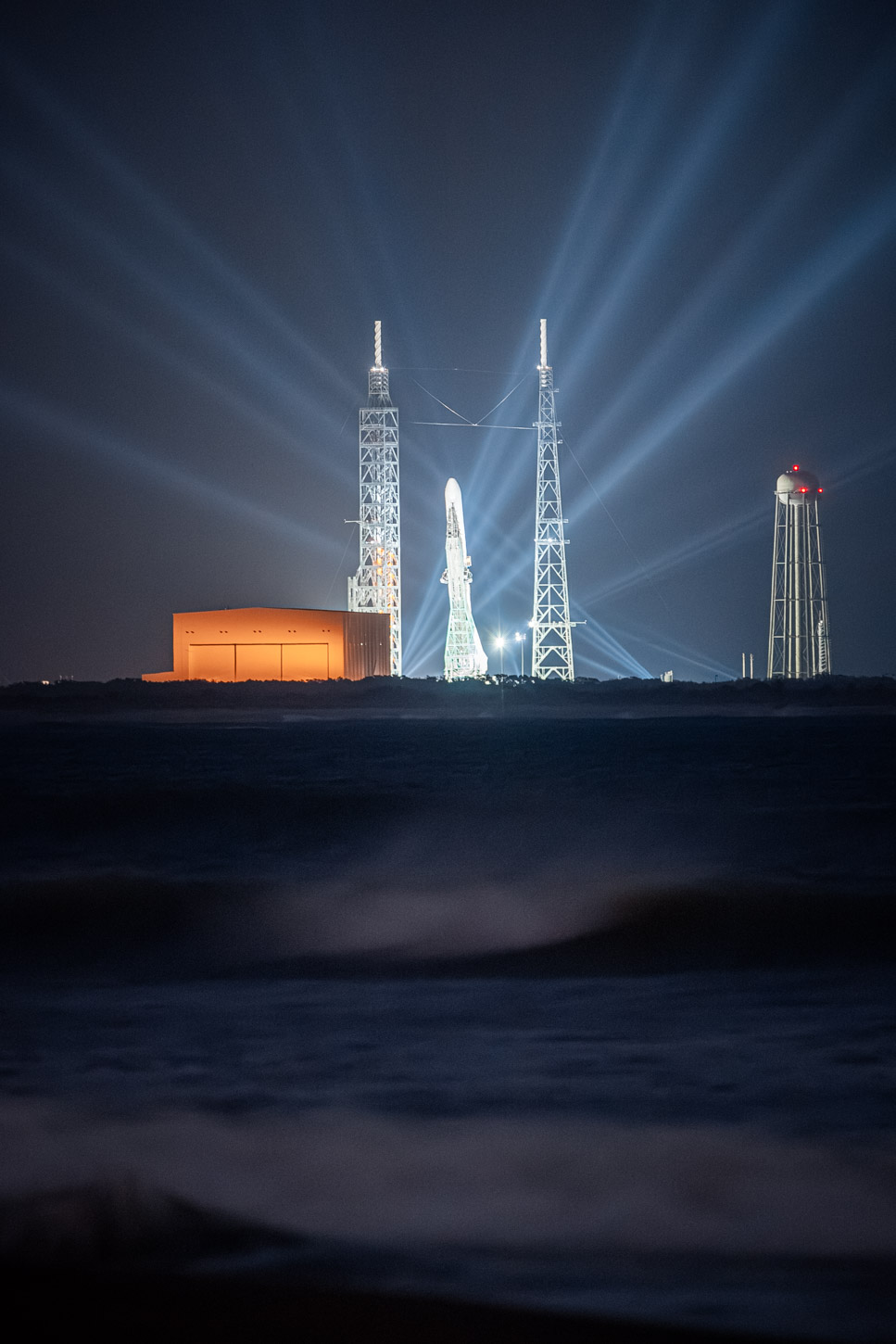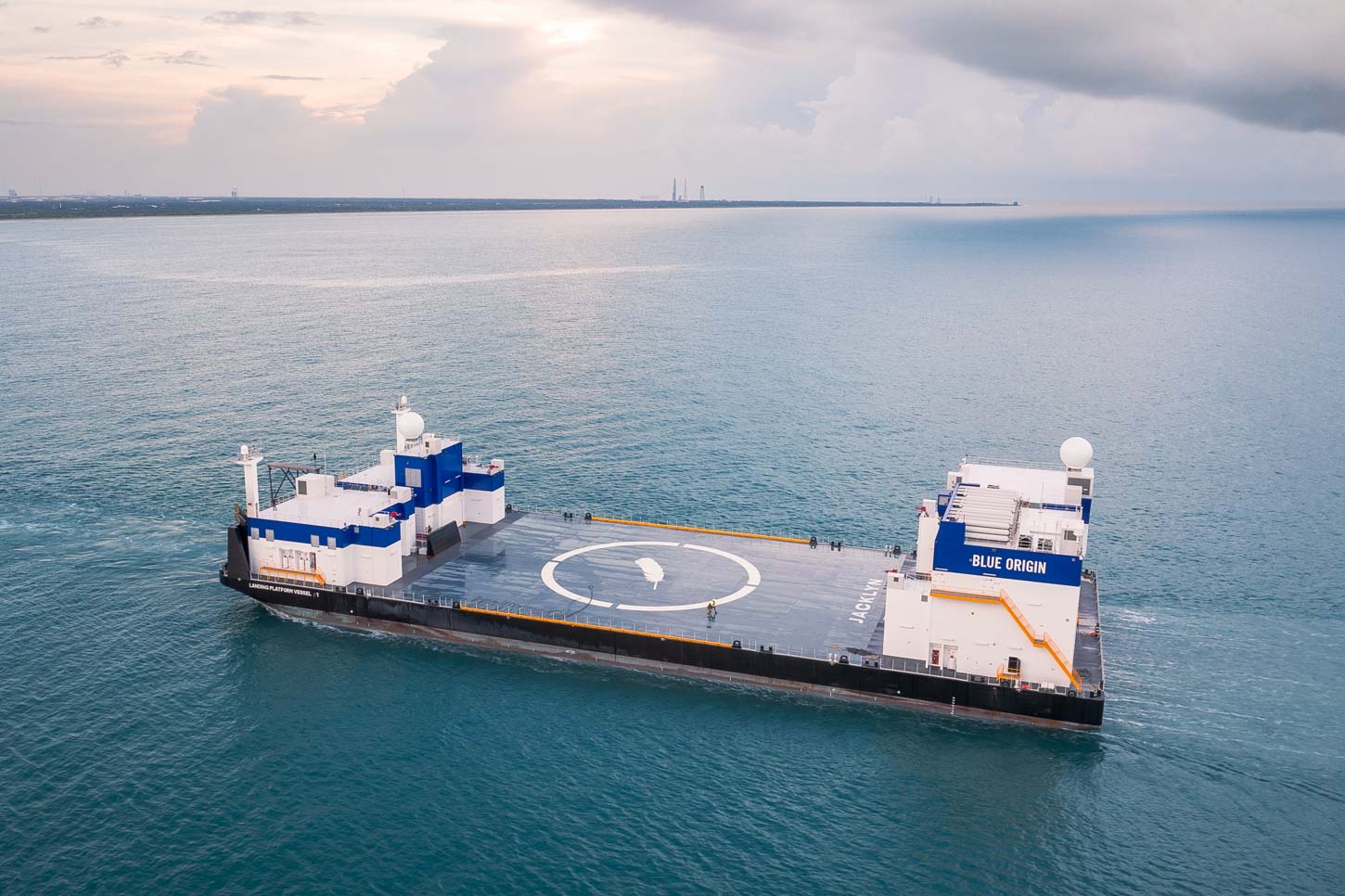Catching the Next Orbital-Class Rocket
Today in Florida, the next piece of the puzzle fell into place for Blue Origin as they prepare to fly their New Glenn heavy-lift rocket for the very first time.
Like SpaceX, Blue Origin intends to recover the first stage of their rocket using an ocean-going platform and then tow the landed stage to Port Canaveral. This inaugural mission holds significant importance, not only because New Glenn is designed from the beginning to be reusable, but because of the NASA spacecraft it will house in the large seven meter payload bay and send toward Mars.
New Glenn has the potential to become the next orbital-class rocket booster capable of attempting such a landing and if successful, the capability would open the door to reusability for Blue, allowing them to further drive down the cost of and time between spaceflights, much in the way SpaceX has with Falcon 9.
The payload for this flight and the science behind this specific mission are twin NASA spacecraft, destined for Mars.

Named EscaPADE (Escape and Plasma Acceleration and Dynamics Explorers), these two spacecraft seek to better understand, from Martian orbit, the processes controlling the structure of Mars’ magnetosphere, investigate how the planet sputters ions off into space, and get to know the multitude of ways in which it interacts overall with the solar wind streaming by.
Get photos and stories like this in your inbox!
Liftoff is scheduled during a narrow window opening October 13 and closing October 21, 2024. (per Irene Klotz at AviationWeek) The trajectory New Glenn sends EscaPADE on will have the duo reaching Mars in September 2025 (around 11 months after liftoff), where they’ll initially enter a highly elliptical orbit or the planet. Over the following 7 months (April 2026) the orbits will be refined until the orbits where they’ll conduct their science are reached.
Jacklyn
Arriving at sunrise this morning, the stage was set to capture some nice aerial photos of Jacklyn and her tug ‘Harvey Stone’.



Photos: Trevor Mahlmann | full-resolution downloads⬇️/wall prints🖼of these images
More
Every 26 months, or thereabouts, a “window” opens in space where Earth and Mars are beneficially positioned in their respective orbits of the Sun, which allow rockets and spacecraft to more speedily transit between the two.

As you can see, the journey to Mars is not simply going straight there, but timing is just right so that you end up right in front of or in the vicinity of Mars, multiple months after launch. This ship’s arrival is significant, because it’s the next milestone checked off the list for New Glenn to be ready to fly.
In the coming days, Blue Origin plans to hot-fire their two, hydrogen-oxygen BE-3U second stage (GS2, Glenn Stage 2) engines on the launch pad at LC-36, as well as integrate the seven, methane-oxygen BE-4 engines at the base of the first stage (GS1), among other “milestones coming up in quick succession” CEO Dave Limp detailed on Twitter.
Action never stops on Florida’s Space Coast!
Be sure to follow me on Twitter, LinkedIn, Facebook, Instagram or leave your email below to keep up-to-date with the latest in spaceflight! (A few emails a month, max.)
My 2025 calendars are now available for pre-order 👀
Leave your email below to keep up-to-date with the latest in spaceflight! (A few emails a month, max.)






